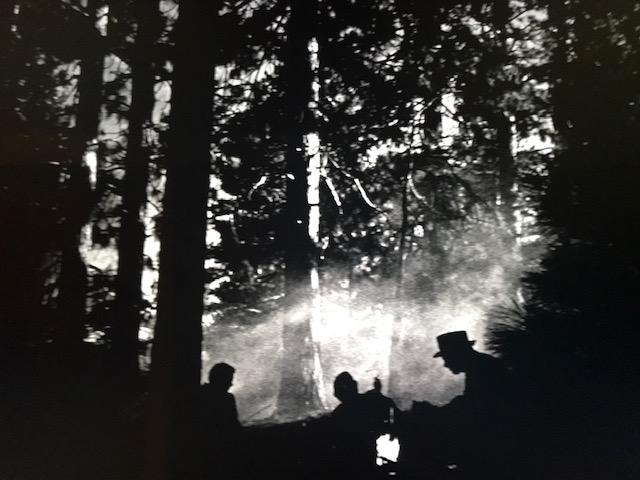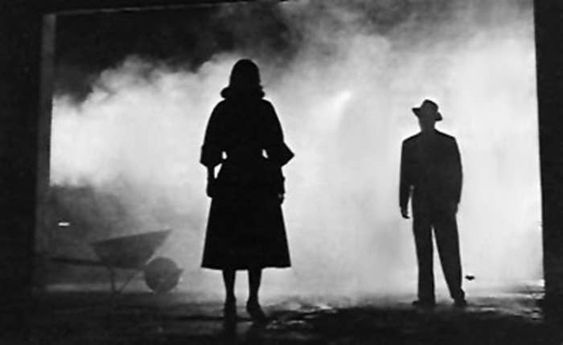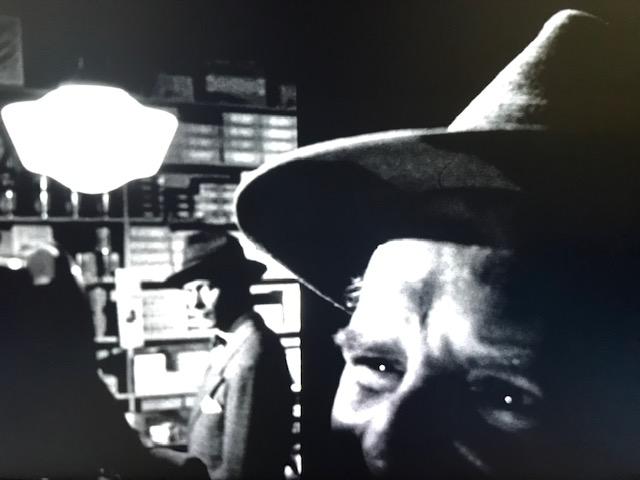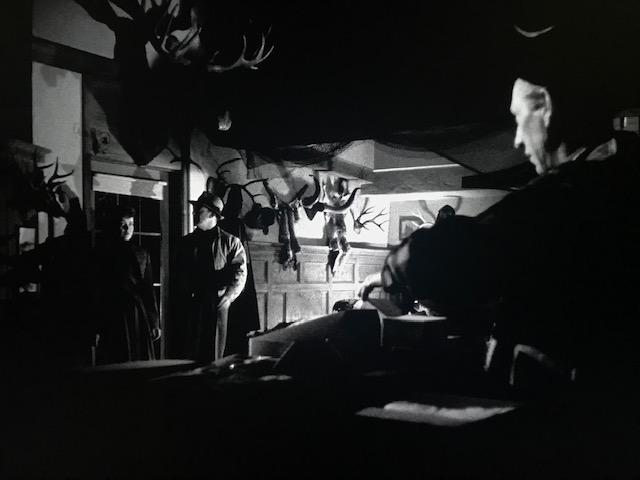John Alton: Noir CinematographerSo much of Film Noir is evoked by the stylized images captured by the Directors of Photography/cinematographers; the moody & oppressive city scapes, the shadows & contrasting light, the vertical & horizontal lines thrown on characters & low angle photography to evoke doom & foreboding. Many of the greatest Films Noir were shot on low budgets, so creativity & cost effectiveness were at a premium. DP's were tasked with limiting the scope of the image, as well as giving the image depth & character. The best of the movement are legendary & have influenced how films have been shot ever since. Nicholas Musaraca (Out of the Past '47) was RKO's house DP for moody black & white, Milton Krasner (The Set Up '49) used simple images to evoke emotion, John Seitz (This Gun for Hire '42 & Double Indemnity '44) worked to create many Noir standards, but my favorite DP may be John Alton, who shot some of the moodiest & beautiful films, mostly for independent producers.
In films like T-Men ('47) & Raw Deal ('48), for director Anthony Mann, & He Walks at Night ('48) for director Alfred Werker, Alton took standard police procedurals & turned them into works of great beauty. Characters faces are cleaved by sharp lines of ink black darkness, while light often sneaks up behind them. Vertical lines imprison antagonists as they fight for escape. Light & dark are constantly at war in beautifully shot three dimensional frames that allow for both vertical & horizontal movement in & out of the viewers eyes. In The Big Combo ('55), Alton's Noir masterpiece, it is a scene of back lit fog in the film's climax that encompasses the feeling of impending death. It is both beautiful & terrifying at the same time & is an image that is not easily forgotten. Strangely enough, Alton received his only Oscar for Best Cinematography for An American in Paris ('51), his first movie shot in color. He retired from film in 1960, but shot the pilot for the TV show Mission: Impossible in 1966, before disappearing from sight for nearly 30 years. He showed up at the premiere of Visions of Light ('92), the seminal documentary on cinematographers of the golden age of Hollywood, in which his work is featured. His work in Film noir not only helped shape the movement, but illustrates the brilliance & beauty of the moving image in black & white. |
- Home
-
Top 10 Lists
- My Top 10 Favorite Movies
- Top 10 Heist Movies
- Top 10 Neo-Noir Films
- The Top 10 Films of the Troubles (1969-1998)
- The Troubles Selected Timeline
- Top 10 Films from 2001
-
Director Top 10's
>
- Top 10 Film Noir Directors
- Top 10 Coen Brothers Films
- Top 10 John Ford Films
- Top 10 Samuel Fuller Films
- Jean-Luc Godard 1960-67
- Top 10 Alfred Hitchcock Films
- Top 10 John Huston Films
- Top 10 Fritz Lang Films (American)
- Val Lewton Top 10
- Top 10 Ernst Lubitsch Films
- Top 10 Jean-Pierre Melville Films
- Top 10 Nicholas Ray Films
- Top 10 Preston Sturges Films
- Top 10 Robert Siodmak Films
- Top 10 Paul Verhoeven Films
- Top 10 William Wellman Films
- Top 10 Billy Wilder Films
-
Actor/Actress Top 10's
>
- Top 10 Joan Blondell Movies
- Top 10 Catherine Deneuve Films
- Top 10 Clark Gable Movies
- Top 10 Ava Gardner Films
- Top 10 Gloria Grahame Films
- Top 10 Jean Harlow Movies
- Top 10 Miriam Hopkins Films
- Top 10 Grace Kelly Films
- Top 10 Burt Lancaster Films
- Top 10 Carole Lombard Movies
- Top 10 Myrna Loy Films
- Top 10 Marilyn Monroe Films
- Top 10 Robert Mitchum Noir Movies
- Top 10 Paul Newman Films
- Top 10 Robert Ryan Movies
- Top 10 Norma Shearer Movies
- Top 10 Barbara Stanwyck Films
- Top 10 Noir Films (Classic Era)
- Top 10 Pre-Code Films
- Top 10 Actresses of the 1930's
-
Reviews
- Quick Hits: Short Takes on Recent Viewing >
- The 1910's >
- The 1920's >
-
The 1930's
>
- Becky Sharp (1935)
- Blonde Crazy
- Bombshell ('33)
- The Cheat
- The Conquerors
- The Crowd Roars
- The Divorcee
- Frank Capra & Barbara Stanwyck: The Evolution of a Romance
- Heroes for Sale
- The Invisible Man (1933)
- L'Atalante (1934)
- Let Us Be Gay
- My Man Godfrey
- No Man of Her Own (1932)
- Platinum Blonde ('31)
- Reckless ('35)
- The Sign of the Cross (1932)
- The Sin of Nora Moran (1932)
- True Confession ('37)
- Virtue ('32)
- The Women
-
The 1940's
>
- Casablanca (1942)
- The Story of Citizen Kane
- Criss Cross (1949)
- Double indemnity
- Jean Arthur in A Foreign Affair
- The Killers 1946 & 1964 Comparison
- The Maltese Falcon Intro
- Moonrise (1948)
- My Gal Sal (1942)
- Nightmare Alley
- Notorious Intro ('46)
- Overlooked Christmas Movies of the 1940's
- Pursued (1947)
- Remember the Night ('40)
- The Red Shoes (1948)
- The Set-Up ('49)
- They Won't Believe Me (1947)
- The Third Man
-
The 1950's
>
- The Asphalt Jungle Secret Cinema Intro
- Cat on a Hot Tin Roof ('58) Intro
- The Crimson Kimono (1959)
- A Face in the Crowd (1957)
- In a Lonely Place
- A Kiss Before Dying (1956)
- Mogambo ('53)
- Niagara (1953)
- The Night of The Hunter ('55)
- Pushover Noir City
- Rear Window (1954)
- Rebel Without a Cause (1955)
- Red Dust ('32 vs Mogambo ('53)
- The Searchers ('56)
- Singin' in the Rain Introduction
- Some Like It Hot ('59) >
-
The 1960's
>
- The April Fools (1969)
- Band of Outsiders (1964)
- Bonnie & Clyde (1967)
- Cape Fear ('62)
- Contempt (Le Mepris) 1963
- Cool Hand Luke (1967) Intro
- Dr Strangelove Intro
- For a Few Dollars More (1965)
- Fistful of Dollars (1964)
- The Good, the Bad and the Ugly (1968)
- A Hard Day's Night Intro
- The Hustler ('61) Intro
- The Man With No Name Trilogy
- The Misfits ('61)
- Point Blank (1967)
- The Umbrellas of Cherbourg/La La Land
- Underworld USA ('61)
- The 1970's >
- The 1980's >
- The 1990's >
- 2000's >
-
Artists
-
Resources
- Video Introductions
- Anatomy of a Murder Notes
Proudly powered by Weebly





